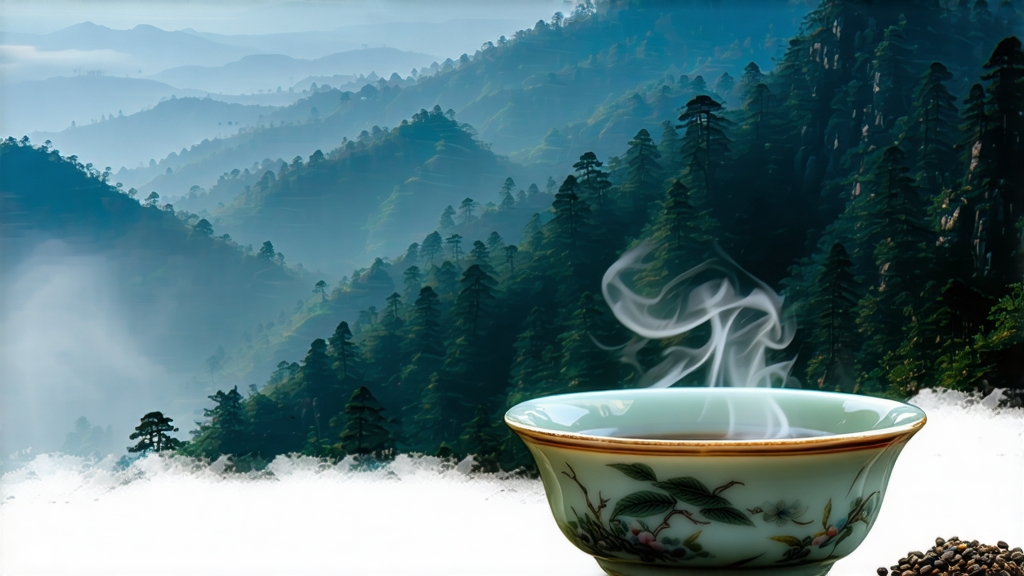
Long before English breakfast blends and afternoon tea trays, a single leaf from the Wuyi Mountains of Fujian sailed across the South China Sea and rewrote the global story of tea. That leaf was Lapsang Souchong—today celebrated as the first fully oxidised black tea ever created, yet still the most polarising cup on any serious tea table. To understand it is to taste the smoke of pine, the mineral bite of volcanic cliffs, and the ingenuity of 17th-century tea makers who turned accident into artistry.
History: From Ming-Era Mishap to London’s Luxury
Local lore fixes the birth year around 1568, when a passing army requisitioned Wuyi tea factories during the late-Ming chaos. To dry the leaves quickly before the soldiers returned, workers spread them over fresh pine fires. The resulting dark, resinous tea travelled with Dutch traders to Amsterdam in 1604, then to Paris and London, where Catherine of Braganza’s 1662 dowry to Charles II popularised “bohea” (the corruption of “Wuyi”) among the Stuart court. By the 18th century Lapsang Souchong commanded twice the price of green tea at Mincing Lane auctions; its smoky perfume became the signature of British tea culture, later copied in Russian Caravan blends and even Earl Grey prototypes.
Terroir: Why Only Wuyi Tastes Like Wuyi
The protected core zone of Tongmu Guan, a narrow gorge at 1,200 m, sits inside a national park where subtropical mist, temperature inversions and highly weathered tuff soils create a natural greenhouse. Old-growth tea gardens of the small-leaf “cai cha” cultivar root directly into rock fissures, absorbing minerals that translate into a flinty, cacao-like base note. Night temperatures can drop 15 °C, forcing the plant to produce more aromatic amino acids; morning fog filters sunlight, lengthening the growing season and concentrating sweet, malty compounds. Move the same cultivar 30 km downhill and the liquor loses both its osmanthus nuance and its capacity to balance pine smoke.
Two Faces of Smoke: Traditional vs. Modern
Today the market splits into two distinct styles. Traditional “Zheng Shan Xiao Zhong” is still crafted inside Tongmu Guan using only local pine (Pinus massoniana) that has aged three years. Fresh leaves are withered over gentle embers in multilevel wooden sheds called qing lou; oxidation proceeds inside rattan baskets rolled by hand every 30 minutes. Once 80 % oxidised, the leaves are rolled, then hot-smoked for six to eight hours on bamboo trays set 1.5 m above resin-rich pine logs. The smoke must never flare—only a wispy blue thread perfumes the leaf, leaving it glossy, chocolate-brown and still pliable. Finally a charcoal bake at 70 °C fixes the aroma and reduces moisture to 3 %.
Modern “wai shan” versions produced outside the gorge often use electric ovens for withering, mechanical tumblers for oxidation, and sawdust bricks for a quick 30-minute smoke. The result is sharper, more tarry, and dominates the export market labelled simply “Lapsang.” Purists compare the two styles to Islay single-malt versus blended Scotch: one whispers campfire and sea salt, the other shouts ashtray.
Grades & Leaf Style
Within Tongmu Guan the grade hierarchy begins with “Ji Pin” (supreme): one bud and the first two leaves, picked before Qingming festival, yielding a liquor as smooth as Burgundy pinot. “Te Ji” (special grade) adds a third leaf and delivers malted-milk sweetness. “Yi Ji” (first grade) uses larger spring material, giving a brisker, more tannic cup. Below these come broken-leaf fannings used for Russian-style samovars. A parallel system exists for unsmoked “wild” Xiao Zhong, dried only with charcoal—this tea, called “wu yan” (no smoke), is increasingly favoured by younger Chinese drinkers who want Wuyi minerality without campfire.
Chemistry in the Cup
Gas-chromatography studies identify 42 volatile phenols; the most emblematic is guaiacol, lending the scent of smoked bacon, while syringol supplies a sweet, clove-like finish. These compounds bond to theaflavins during oxidation, soft